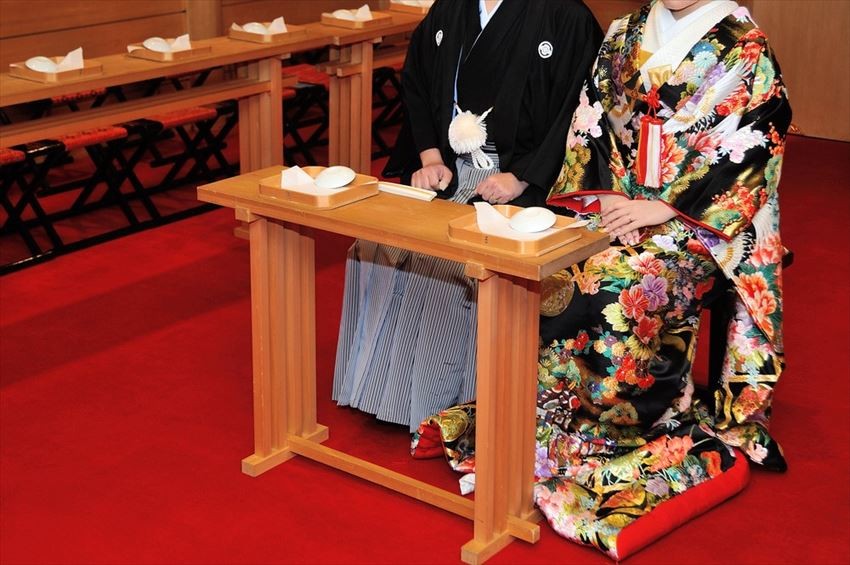
Weddings in Japan are unique because the style is a combination of Japan and the West. Some brides choose to walk down the aisle in a chapel with a long, white dress. Others choose to get married in a Shinto shrine wearing a beautiful white kimono.
This second option is called Shinzen Shiki (神前式) which means “ceremony in front of the gods.”
Read on to learn what happens in this quintessential Japanese ceremony and how couples prepare for their special day.
A crash course in wedding history
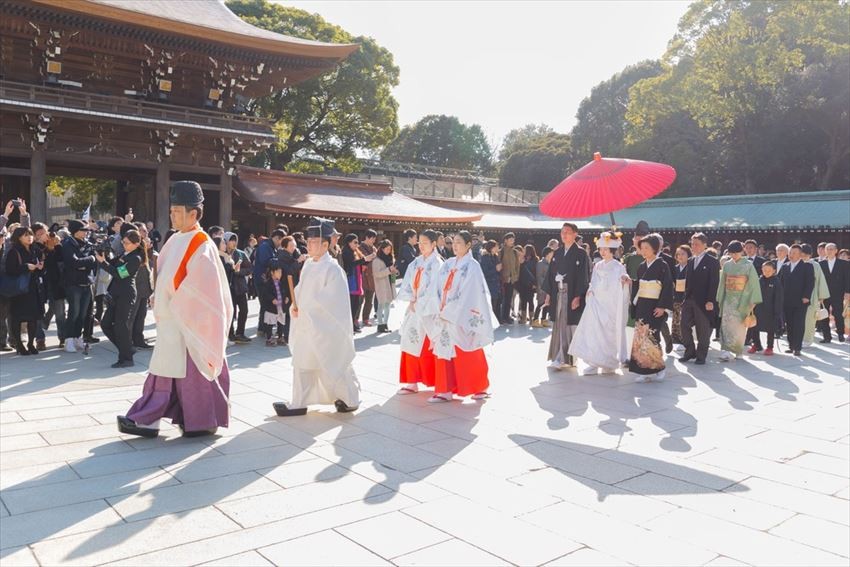
The first person to get married Shinto-style was the emperor of Japan in 1900. But this style of wedding didn’t catch on with the general population until after World War II.
Before that time, most people got married in simple ceremonies as they stood in front of the altar located inside the groom’s home.
Nowadays, it’s more common for Japanese people to get married in Christian-style ceremonies, even if they are believers in Shinto or Buddhism.
However, some people still choose shinzen-shiki because of its ties to Japanese culture. It’s an increasingly popular option with young people seeking to discover their cultural roots.
Wedding attire
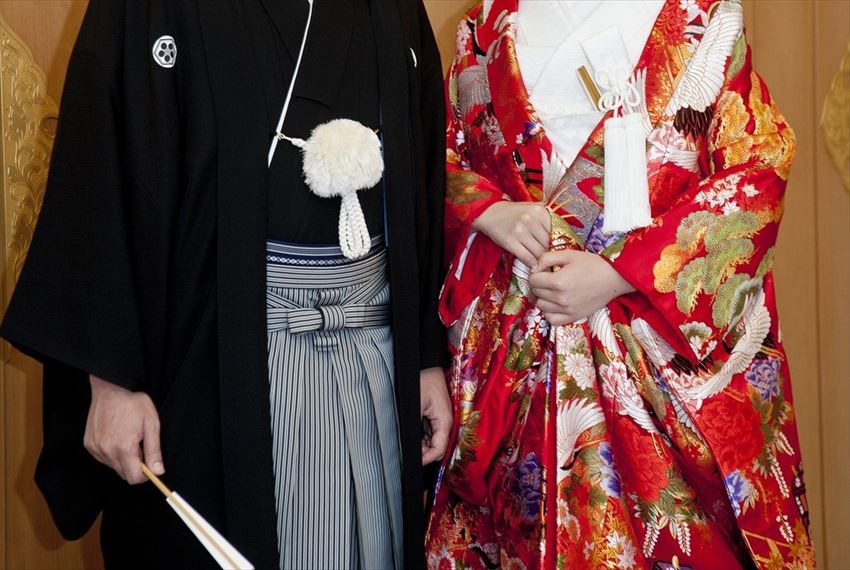
At the ceremony, grooms wear a special kimono called montsuki haori hakama (紋付羽織袴). If the groom’s family owns a family emblem or kamon, the jacket will be printed with the family emblem on the back, sleeves, and chest.
The bride‘s intricate kimono is called shiromuku (白無垢), crafted from several layers of pure white fabric. It takes a few helpers to wrap her in all the pieces and tie the obi into a complicated pattern.
Her hair is covered with a wig and a wataboshi (綿帽子)or a white cotton hat is placed on her head. The wataboshi was originally used as a warm hat for winter, but over time it’s now adopted as a wedding veil.
The bride can also choose to wear irouchikake (色打掛), a colourful kimono that are often embedded with golden linings and vivid patterns.
What happens at the wedding
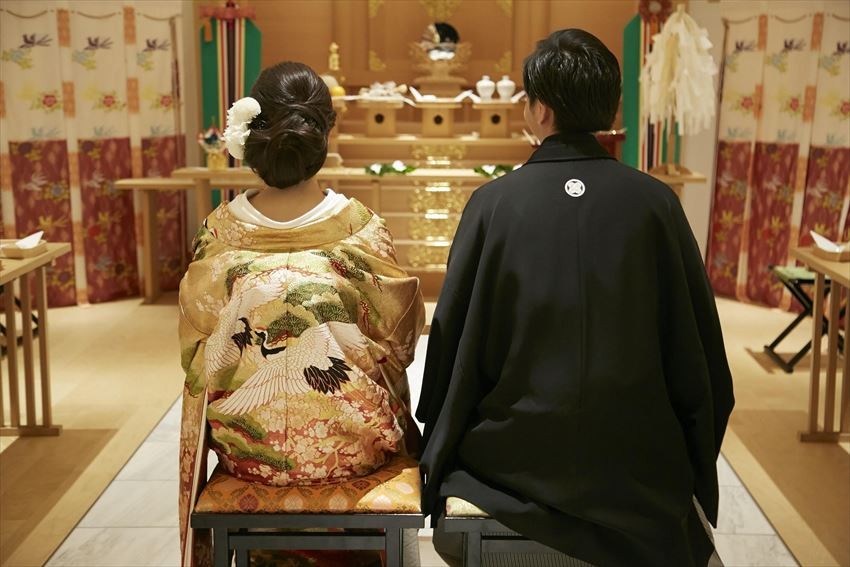
The shinzen-shiki is steeped in tradition and follows a fairly strict template. The details may vary depending on the shrine, but most follow this basic outline.
First is the sanshin-no-gi (参進の儀) or Procession Ceremony. Shrine maidens lead the wedding party down the path to the entrance.
Next, the family enters the shrine, followed by the bride and groom.
Once everyone has entered and been seated, the Shinto priest performs a purification ritual over the couple and guests. This is called shūbatsu, or Purification.
The priest continues by reading a Shinto ritual prayer in a ceremony called norito-sōjō (祝詞奏上). This prayer presents the couple to the gods and beseeches them to bless the newly wedded.
Next, the couple performs a symbolic ritual called seihai-no-gi or the Exchange of Sacred Cups. The bride and groom both take three sips from three cups filled with sacred wine. The first cup is to express their gratitude to their ancestors, the second is to pray for the couple’s relationship, and the third is to pray for future generations and their prosperity.
This is followed by kagura-hōnō (神楽奉納), or the Dedication of the Sacred Dance, performed by shrine maidens as an offering to the gods.
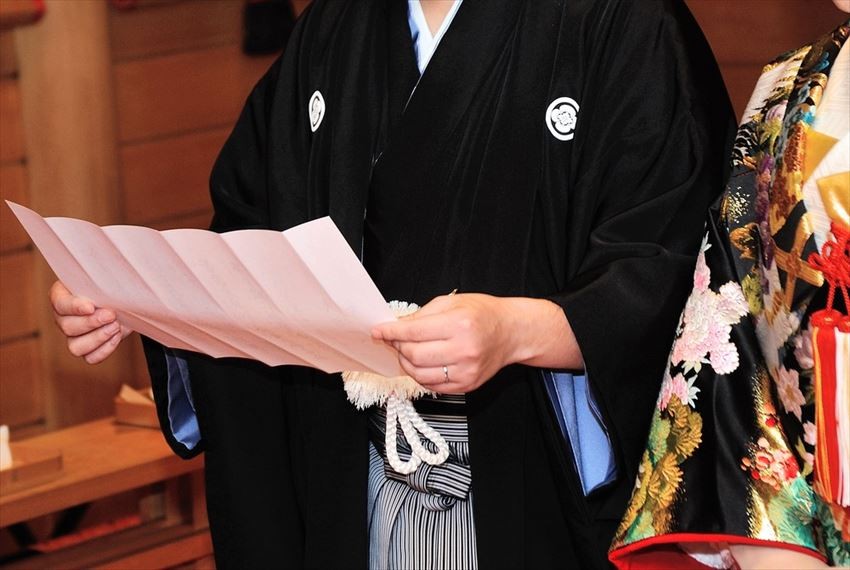
The couple exchanges their vows, called seishi-sōjō, in front of the gods, and then makes an offering by placing wooden branches on the altar. They and the attendees take two bows and clap twice as is customary at a shrine. This is called tamagushi-hōten (玉串奉奠).
Finally, the couple exchanges rings.
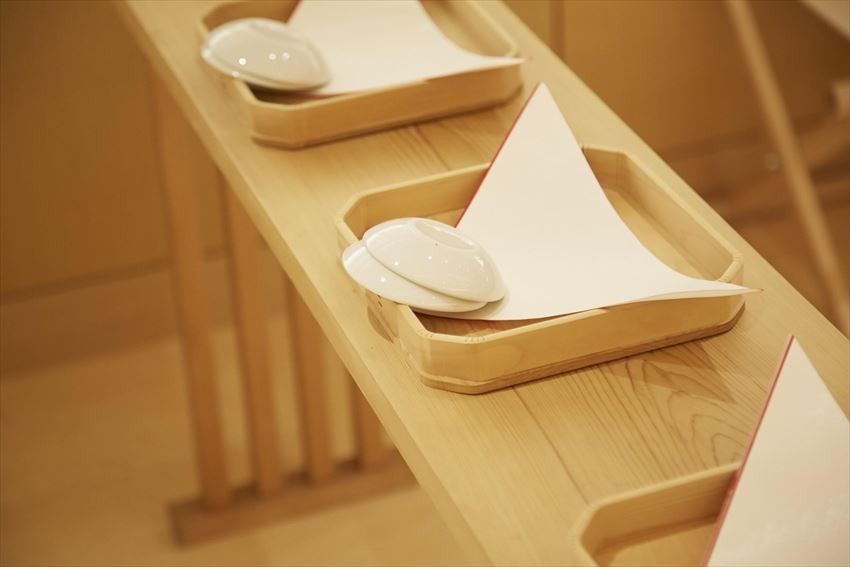
To solidify the new bond, all participants engage in a ritual called shinzokuhai-no-gi (親族杯の儀) or the Exchange of Cups with Family. The bride and groom and members from each side share two cups to symbolize the union of two families.
To close the ceremony, the priest offers a saishu-aisatsu (斎主挨拶), or Priest’s Greeting, as all bow to the altar and offer their congratulations.
All the guests give a final greeting to the gods before leaving the room.
After the ceremony finishes, most couples have a wedding banquet to celebrate!
Things to prepare
After the engagement, couples have a family meal called yuino (結納) that communicates to both families as the couple is promised to be married.
Most couples also have a more casual family dinner for both sides to get to know each other, about 3-6 months before the wedding.
When choosing a date for the wedding, couples are careful to choose a taian (大安) or auspicious day of the year.
Have you ever seen a traditional Japanese wedding? What did you think?
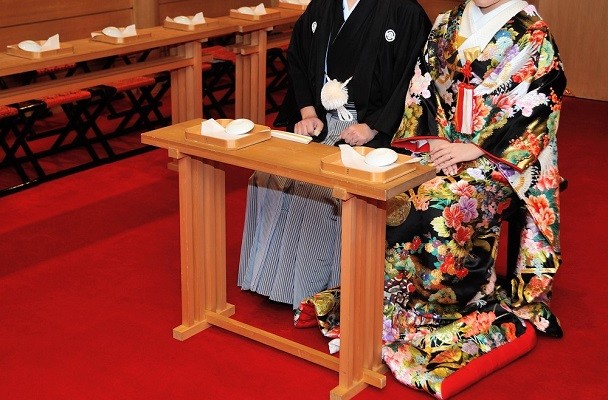
Comments